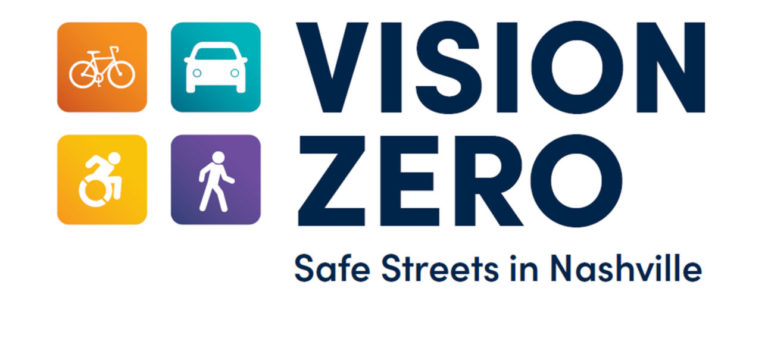Breaking the Stigma: Social Norms and Help-Seeking Behaviors Part II
- April 18, 2023

In Part I of this series on the power of social norms messaging to reduce veteran suicides, we explored the potential of social norms messaging as an alternative approach to reducing veteran suicides. Despite various resources and prevention campaigns implemented by the VA, the rates of veteran suicide have continued to rise. The article argues that the VA’s current approach relies heavily on individual-level interventions and suggests that alternative approaches, such as social norms messaging, may be more effective in changing behavior.
While Part I provides an overview of contributing factors, the VA’s efforts, and the pandemic’s toll on veteran suicides, this second part delves into the potential of social norms messaging and provides examples of how it can be implemented to reduce veteran suicides.
Suicide Prevention Marketing Tactics: A Review of Conventional Approaches
Traditional marketing awareness and prevention campaigns aimed at preventing suicides typically rely on providing information and education about the risk factors for suicide, the warning signs of suicidal ideation, and the availability of resources for seeking help. These campaigns often use slogans, brochures, and media campaigns to increase awareness and encourage people to seek help.
However, research suggests that traditional marketing and prevention campaigns may not be effective in changing behavior and preventing suicide. One reason for this is that campaigns may not take into account the complex social and cultural factors that influence suicidal behavior.
For example, many campaigns may focus on individual risk factors such as depression, without acknowledging the social and environmental factors that contribute to suicidal behavior. Additionally, campaigns that emphasize the importance of seeking help may not take into account the social norms and stigma around seeking help for mental health issues.
In contrast, social norms messaging is different from traditional marketing awareness and prevention campaigns in several ways. Firstly, social norms messaging focuses on changing perceptions of what is normative and acceptable behavior rather than simply providing information about the issue. This approach is grounded in the idea that people’s behavior is influenced by what they perceive to be normative behavior in their social environment, rather than simply by their knowledge of what is objectively right or wrong. The aim is to shift behaviors in a positive direction by changing the norms.
Secondly, social norms messaging often employs a positive, empowering tone that seeks to inspire people to take positive action rather than simply warning them about the negative consequences of their behavior. This approach has been found to be more effective in motivating behavior change than fear-based messaging.
Thirdly, social norms messaging often involves community-level interventions rather than individual-level interventions. This means that social norms messaging seeks to change the behavior of a community or social group rather than just targeting individual behavior change. This approach is particularly effective in addressing issues such as suicide, which are often influenced by social and cultural factors.
Finally, social norms messaging is often designed to be more engaging and interactive than traditional marketing and prevention campaigns. This can involve using social media and other digital platforms to disseminate messages and create online communities around behavior change.
Examples of Social Norms Messaging that Work
There are several examples of effective social norms messaging that have been used to address a variety of health-related behaviors, including suicide prevention. Here are a few examples:
- “Know the Five Signs” Campaign: This campaign was developed by the National Council for Behavioral Health and is designed to help people recognize the signs of emotional suffering and mental health issues. The campaign uses social norms messaging to communicate that it is normal to struggle with mental health at times, and that seeking help is a sign of strength. The campaign has been successful in changing attitudes about mental health and increasing help-seeking behavior.
- “Man Therapy” Campaign: This campaign was developed by the Colorado Office of Suicide Prevention and uses humor and social norms messaging to encourage men to seek help for mental health issues. The campaign features a fictional therapist named Dr. Rich Mahogany, who uses a humorous and irreverent approach to engage men and challenge stereotypes about masculinity and mental health. The campaign has been successful in reaching men who might not otherwise seek help for mental health issues.
- “Be the One to” Campaign: This campaign was developed by the Tennessee Suicide Prevention Network and uses social norms messaging to encourage people to take action to prevent suicide. The campaign features a variety of messages that encourage people to “be the one to” ask for help, listen to someone in need, or take other proactive steps to prevent suicide. The campaign has been successful in raising awareness about suicide prevention and encouraging people to take action.
- “It’s Okay to Talk About Suicide” Campaign: This campaign was developed by the American Association of Suicidology and uses social norms messaging to challenge the stigma around suicide and encourage open and honest communication about suicide. The campaign features a variety of messages that communicate that it is okay to talk about suicide and that seeking help is a sign of strength. The campaign has been successful in increasing awareness about suicide prevention and encouraging people to seek help when they need it.
- The “buddy check” program: This program was created by the military to help reduce suicide rates among service members. The program encourages service members to check in on each other and seek help if they are struggling with mental health issues. The messaging emphasizes that seeking help is the norm and that it is a sign of strength to reach out for support.
- The “It’s Up to Us” campaign: This campaign was launched in California to reduce suicide rates among young adults. The campaign uses social norms messaging to shift perceptions of help-seeking behavior among this population. The messaging emphasizes that seeking help for mental health issues is a common and acceptable behavior.
- The “Zero Suicide” program: This program is a comprehensive suicide prevention initiative that has been implemented in healthcare systems across the United States. The program uses social norms messaging to create a culture of safety and support for individuals who are at risk of suicide. The messaging emphasizes that seeking help is the norm and that healthcare providers are there to support individuals who are struggling with mental health issues.
These interventions have been successful in reducing suicide rates by shifting perceptions of what is normative and acceptable behavior. By creating a social norm of seeking help, individuals who are struggling with mental health issues are more likely to reach out for support, which can help to prevent suicides.
Creating a social norm of seeking help is crucial in preventing suicide, particularly among veterans. For many individuals, seeking help for mental health concerns can be perceived as a sign of weakness, which can lead to social isolation and reluctance to access mental health resources. However, by creating a social norm that encourages seeking help as a sign of strength and resilience, individuals may feel more comfortable seeking support and treatment.
One way to promote this social norm is through public messaging campaigns that highlight stories of veterans who have successfully sought help and overcome mental health challenges. These campaigns can also feature testimonials from mental health professionals and peers who have supported someone through their mental health journey.
Another strategy is to increase awareness and accessibility of mental health resources, such as counseling services and support groups, to normalize the act of seeking help. For example, organizations can provide education and training for community members, healthcare providers, and employers to recognize the signs of mental distress and how to offer support.
By creating a culture where seeking help for mental health concerns is the norm, veterans may be more likely to access and utilize mental health resources when needed, ultimately reducing the risk of suicide.
Shifting Mindsets: The Aim of Social Norms Messaging
Shifting perceptions of normative and acceptable behavior is an important aspect of reducing veteran suicides. Social norms can have a powerful influence on individual behavior and attitudes, so changing the perception of what is normative and acceptable can lead to changes in behavior.
One approach to shifting perceptions is to use social norms messaging to highlight the fact that many people seek help when they are struggling with mental health issues. This can create a new norm around help-seeking behavior, where it is seen as a positive and courageous step to take.
Another approach is to use targeted messaging to change perceptions about specific behaviors that are contributing to the problem of veteran suicides. For example, if there is a social norm around the acceptability of keeping one’s struggles with mental health private, targeted messaging can be used to promote the idea that seeking help is a sign of strength and can lead to positive outcomes.
Creating a social norm of seeking help involves a comprehensive effort to change the culture around mental health and suicide prevention. This can include education campaigns that promote the benefits of seeking help, outreach efforts that connect veterans with mental health services, and partnerships with community organizations to create supportive networks for those struggling with mental health issues.
One effective way to create a social norm of seeking help is to involve peers and trusted community members in suicide prevention efforts. Peer support programs, for example, have been shown to be effective in reducing suicide risk among veterans. By promoting the idea that seeking help is a normal and accepted behavior, these programs can help to create a new social norm that supports mental health and well-being.
Changing the Narrative
Social norms messaging has the potential to significantly reduce veteran suicides by changing perceptions of what is normative and acceptable behavior related to help-seeking and mental health. Veterans face unique challenges and stigmas surrounding mental health and seeking help, and changing these social norms can be a critical component in suicide prevention efforts.
By promoting a social norm of seeking help for mental health concerns, social norms messaging can increase the likelihood that veterans will seek the support they need. This can lead to earlier intervention and treatment, reducing the risk of suicide. In addition, social norms messaging can also help to reduce feelings of isolation and shame associated with mental health struggles, fostering a sense of community and support.
Studies have shown the potential of social norms messaging in reducing suicide rates. For example, one study found that a social norms campaign aimed at changing perceptions of help-seeking behavior among college students resulted in a significant increase in students seeking mental health services.
Applying social norms messaging to veteran suicide prevention efforts can involve targeting specific subgroups of veterans with messages that address their unique experiences and challenges. For example, messaging may focus on the social norm of seeking help among veterans who have experienced combat trauma, or veterans who have struggled with addiction or homelessness.
Social norms messaging has the potential to complement and enhance traditional suicide prevention efforts by addressing the underlying social and cultural factors that contribute to veteran suicides. By promoting a social norm of seeking help and reducing stigma surrounding mental health, social norms messaging can play an important role in reducing veteran suicides and improving overall mental health outcomes for veterans.


